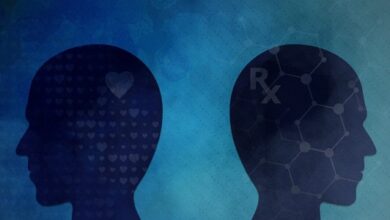The concept of the collective unconscious was proposed by Carl Jung, founder of analytical psychology, in the mid-19th century. Broadly speaking, it refers to a dimension that is beyond consciousness and is common to the experience of all human beings.
Although the term collective unconscious has been the subject of much criticism, it has also been positioned as a theory that offers important elements to understand many human phenomena. In this article , we will look at what the collective unconscious is and how it has impacted psychodynamic psychology .
Brief history of the unconscious
The history of psychology has been marked by different theories that address the relationship between the dimension of consciousness and its opposite or complementary dimension. Many proposals have emerged to solve this problem.
Among them is the concept of the unconscious from the psychodynamic perspective, which emerged at the end of the 19th century in Freudian psychoanalysis , but was taken up and reformulated some time later, both by its followers and by its defectors.
One of the most popular is Carl Jung, who after collaborating closely with Sigmund Freud, decided to form his own tradition outside of psychoanalysis, which we know as “analytical psychology” . Among the main concepts that are part of this tradition is the collective unconscious.
What is the collective unconscious?
Within traditional psychology, it is understood that the complement to the “individual” is “the social”. However, for analytical psychology, the complement to the individual is not precisely the social, but the collective, which does not only refer to the group of people that make up a society, but also emphasizes what these people have in common.
According to Jung, just as the individual has a psychic dimension that is beyond consciousness (the unconscious); the collective, although belonging to a suprapersonal dimension, also has its own unconscious. Unlike the individual unconscious, acquired through lived experiences, the collective unconscious is a common platform, composed of archetypes that shape our individuality.
In other words, according to Jung, there are a series of psychic, imaginary and symbolic experiences, whose existence is not given by lessons learned, but deals with experiences that all human beings share, regardless of our individual life histories.
As they are experiences that obey another order, Jung defines the collective unconscious as a second psychic system whose nature is universal and impersonal .
Just as the physical characteristics of an individual are more or less common to all individuals belonging to the human species, the psyche also has common characteristics that exist independently of the culture and history of societies. It is an example that transcends age, life and even death; It is an experience that has accompanied humanity since its existence.
Carl Jung’s First Definitions
In his early works, Jung described the Collective Unconscious as that substratum that makes it possible to understand why people who belong to such apparently different cultures share some characteristics of humor.
The latter can be seen, for example, in repetitive dreams, in art, in myths and religions, in children’s stories, in psychic symptomatology, among other areas. For this reason, the collective unconscious served Jung to offer explanations about the common meanings of symbols and myths that are apparently different across cultures .
Formally, the concept of the collective unconscious emerged in 1936, after a lecture that Jung gave in London, precisely with the title of The concept of the collective unconscious.
archetypes
The collective unconscious is mainly composed of archetypes, pre-existing and universal forms (ideas, images, symbols) that shape much of the psychic content.
According to Jung, just as we human beings have instinctive behavior patterns mediated by biological activity, we have instinctive behavior patterns mediated by psychic activity , which draws on the mythical aspect by which experiences are mapped and narrated.
In this sense, the archetypes and the collective unconscious are transmitted by the very condition of being human, and their effects are visible in the conformation of the individual psyche. And that’s because, for Jung, the unconscious also has purposes, intuitions, thoughts, feelings, etc., as does the conscious mind.
To develop the concept of archetype, Jung took as a reference several anthropological and philosophical works, especially by authors such as Mauss, Lévy Bruhl and A. Bastian. Some of the archetypes that have developed in an important way and that have been taken up by different authors are the anima, the shadow or the great mother.
Impact on psychology and related fields
Among other things, the concept of the collective unconscious served to formulate explanations about different human experiences that more traditional and rational science can hardly explore. For example, in specific questions about mystical experiences, artistic experiences or some therapeutic experiences .
In addition, the concept of the collective unconscious has impacted much of the specialized language in areas that are not properly psychological, because it serves to talk about what we know we share, regardless of culture, although we don’t know what it is. For the same reason, it has been an often problematic concept, ambiguous and subject to several criticisms, without ceasing to be present, even in the most common language.



